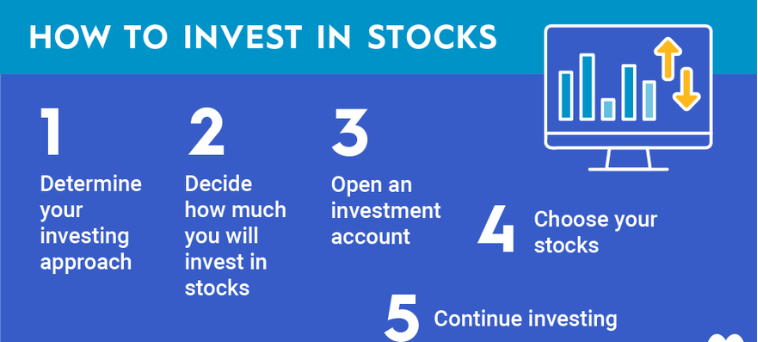Beginner’s Guide to Stock Market Investing
The stock market can seem intimidating full of charts, jargon, and headlines about big gains and sudden crashes. But here’s the truth: you don’t need to be a Wall Street expert to start investing.
With the right foundation, anyone can build wealth through the stock market over time. This guide will walk you through the basics so you can start investing with confidence.
Why Invest in the Stock Market?
Investing isn’t about getting rich overnight it’s about letting your money grow faster than it would in a savings account. Historically, the stock market has returned an average of 7–10% per year (after inflation) over the long term.
This growth happens thanks to compound interest earning returns not just on your original investment, but also on the returns you’ve already made.
Step 1: Understand What Stocks Are
When you buy a stock, you’re buying a tiny piece of a company called a share. If the company grows and becomes more valuable, your share’s value increases.
There are two main ways to make money with stocks:
-
Capital Gains – Selling a stock for more than you paid.
-
Dividends – Regular payments from companies that share their profits with shareholders.
Step 2: Choose Your Investing Style
There are two main approaches for beginners:
-
Passive Investing → Buying index funds or ETFs (Exchange-Traded Funds) that track the overall market. Lower risk, less time-consuming.
-
Active Investing → Picking individual stocks and managing your portfolio yourself. More time and research required, higher risk.
Step 3: Open an Investment Account
You can’t just walk into a store and buy stocks you need a brokerage account.
-
Popular options include Fidelity, Vanguard, Charles Schwab, Robinhood, and eToro.
-
Look for low fees, an easy-to-use interface, and good educational resources.
Step 4: Start Small and Diversify
Don’t put all your money into one stock. Spread it across different industries and asset types to reduce risk.
-
Example: 70% in a broad market ETF, 20% in international stocks, 10% in bonds.
-
You can start with as little as $50–$100 depending on your broker.
Step 5: Think Long-Term
The market will go up and down in the short term sometimes dramatically. But over decades, it has historically trended upward.
-
Avoid panic-selling when prices drop.
-
Keep investing regularly through dollar-cost averaging (investing the same amount at set intervals).
Common Mistakes to Avoid
-
Trying to “time the market” instead of staying invested.
-
Investing money you might need in the next 3 years.
-
Ignoring fees and commissions.
-
Following hype instead of doing research.
The Bottom Line
Stock market investing doesn’t have to be complicated or risky if you approach it with the right mindset: start small, diversify, and think long-term.
You don’t have to beat the market you just have to participate in it consistently. And the earlier you start, the more time your money has to grow.


